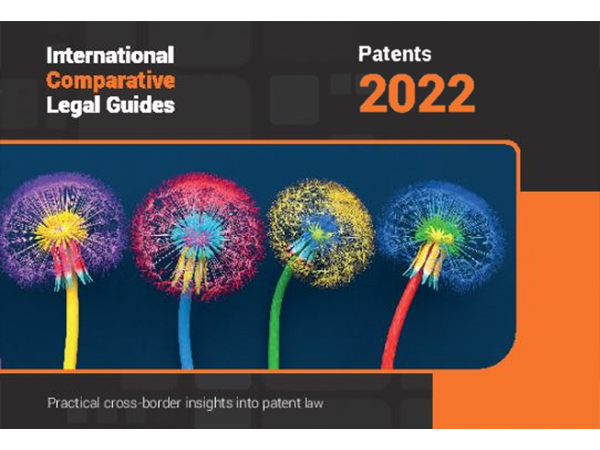
Intellectual Property
Viewpoints
Filter by:
Med Tech and Biotech Entrepreneurs - $100k Challenge is OPEN for 5 More Days!
February 2, 2016 | Blog | By William Geary
The University of Massachusetts' Medical Device Development Center (M2D2) has launched the 5th Annual M2D2 $100K Challenge, an opportunity designed to showcase the innovative ideas and entrepreneurial spirit of seed and early-stage biotech and medical technology companies.
Read more
Biosimilars and FDA Regulatory Webinar Recap
February 2, 2016 | Blog | By Joe Rutkowski
Mintz Levin’s Biosimilar webinar series continued this month with Linda Bentley and Joanne Hawana’s Biosimilars FDA/Regulatory Overview presentation on the Biologics Price Competition and Innovation Act (“BPCIA”) and its implementation.
Read more
Inphi v. Netlist: Alternative Features Satisfy the Patent Written Description Requirement for a Negative Claim Limitation
February 1, 2016 | Blog | By Christina Sperry, Catherine Xu
It can be tricky to evaluate written description support under 35 U.S.C. § 112 for negative claim limitations since the support may amount to the absence of a feature from an invention that is described positively with respect to what it includes, as opposed to what it does not.
Read more
Pfizer v. Lee: A Patent Term Adjustment Double Standard?
February 1, 2016 | Blog | By Christina Sperry
In Pfizer v. Lee (No. 2015-1265, January 22, 2016), the Federal Circuit upheld the U.S. Patent and Trademark Office’s (USPTO) determination that the toll period for A-type patent term adjustment (PTA) delay stops upon the mailing of a deficient USPTO paper.
Read more
ClearCorrect: ITC and Patentee Align Submit Petitions for Rehearing En Banc, Asking Federal Circuit to Reconsider Whether the ITC Has Jurisdiction Over Digital Imports
January 29, 2016 | Blog | By Nick Armington, Daniel Weinger
On January 27, 2016, the International Trade Commission (ITC) formally requested a rehearing en banc of a November 10, 2015, Federal Circuit panel decision in ClearCorrect Operating, LLC v. ITC.
Read more
Federal Circuit Reverses Punitive Exceptional Case Fee Award as Improperly Enhanced
January 27, 2016 | Advisory | By James Wodarski, Andrew DeVoogd
On January 22, 2016, the Federal Circuit issued its opinion in Lumen View Technology LLC v. FindTheBest.com (Dkt. No. 15-1275), in which it vacated and remanded the lower court’s award of enhanced attorney fees under 35 U.S.C. § 285.
Read more
Westlake Services v. Credit Acceptance: PTAB’s Precedential Decision to Apply Estoppel on a Claim-by-Claim Basis
January 25, 2016 | Blog | By William Meunier , Matthew Galica
The Patent Trial and Appeal Board recently designated as precedential its decision in Westlake Services, LLC v. Credit Acceptance Corp., CBM2014-00176, Paper 28 (PTAB May 14, 2015) addressing the scope of estoppel under 35 U.S.C. § 325(e).
Read more
Apple (Finally) Enjoins the Sale of (Obsolete) Samsung Phones
January 21, 2016 | Alert | By James Wodarski, Andrew DeVoogd, Daniel Weinger
In the latest development in the patent skirmishes between Apple and Samsung, on Monday, January 18, 2016, U.S. District Court Judge Lucy Koh of the Northern District of California entered a permanent injunction barring Samsung from selling certain smartphone models within the United States due to their infringement of three Apple patents.
Read more
PTAB Designates Decision Concerning One-Year Statutory Bars As Precedential
January 21, 2016 | Blog | By William Meunier , Nick Armington
Last week, the PTAB designated two recent post-grant proceeding decisions as “precedential,” marking only the second and third time it has designated one of its opinions as binding on all PTAB judges.
Read more
Year in Review: The Most Popular Blog Posts of 2015
January 21, 2016 | Blog | By Christina Sperry
As 2016 begins and IP strategies are being developed for the new year, it is a good time to reflect on what IP issues were prominent in 2015. According to the many readers of Global IP Matters, hot topics included navigating the waters of U.S. patent prosecution, analyzing Federal Circuit appeals from the International Trade Commission, and handling Japanese patent oppositions.
Read more
USPTO Implementation of AIA Does Not Violate Due Process: Federal Circuit Affirms the PTAB Panel Determining Institution of an IPR can also Issue the Final Written Decision
January 15, 2016 | Blog | By William Meunier
In Ethicon Endo-Surgery, Inc. v. Covidien LP, a 2-1 panel split of the Federal Circuit held that neither the American Invents Act (“AIA”) nor the Constitution precludes the same panel of the Patent Trial & Appeal Board (“PTAB” or “Board”) from both deciding whether to institute an inter partes review (“IPR”) of a challenged U.S. Patent and making the final patentability determination in that IPR.
Read more
Federal Circuit Hears Argument on Personal Jurisdiction in Two Hatch-Waxman Appeals
January 12, 2016 | Blog | By Adam Samansky, Joe Rutkowski
On Monday, January 4, the Court of Appeals for the Federal Circuit heard oral argument in two appeals that may determine what effect the Supreme Court’s Daimler AG v. Bauman decision will have on the exercise of personal jurisdiction over generic pharmaceutical manufacturers in Hatch-Waxman litigation.
Read more
Judge Gilstrap awards Section 285 fees where Plaintiff’s Section 101 positions cross the “threshold of exceptionality.”
January 7, 2016 | Blog | By Michael Newman, Robert Moore
On December 17, 2015, Judge Rodney Gilstrap of the Eastern District of Texas (EDTX) ruled that, in light of Alice Corporation Pty. Ltd. v. CLS Bank International, 134 S. Ct. 2347 (2014) (“Alice”), a plaintiff’s position on the validity of the patent-in-suit under § 101 was “objectively unreasonable” and that the harm to the defendants was compounded by the plaintiff litigating in “an unreasonable manner[,]” meriting an award of attorneys’ fees under 35 U.S.C. § 285. eDekka LLC v. 3balls.com, Inc.et al., C.A. Nos. 2:15-cv-541 and 2:15-cv-585 (Dec. 17, 2015).
Read more
Reminder - Biosimilars Webinars: A Five-Part Legal and Regulatory Issues Series
January 6, 2016 | Blog | By Terri Shieh-Newton, Joanne Hawana
Join us for the first webinar in our five-part Biologics/Biosimilars series, “Legal and Regulatory Overview” tomorrow, January 7, 2016 at 3:00 PM ET, featuring Terri Shieh-Newton and Joanne Hawana!
Read more
Review of 2015 Federal Circuit Decisions Addressing IPR Claim Construction and Procedural Issues
December 29, 2015 | Blog | By Michael Newman, Nick Armington
2015 was a busy year for post-grant review appeals at the Federal Circuit and produced notable opinions in the areas of claim construction, IPR procedural issues, and the constitutionality of IPRs in general. In 2015, the Federal Circuit reversed the Board’s claim construction in an IPR for the first time, and found that IPRs do not violate Article III and the Seventh Amendment of the Constitution.
Read more
Fed. Cir. Defers to PTAB Finding of Obviousness in First Pharma IPR Reviews (Merck v. Gnosis)
December 21, 2015 | Alert | By Peter Cuomo, Rich Gervase
On December 17, 2015, the Federal Circuit issued a precedential decision affirming a determination by the Patent Trial and Appeal Board (“PTAB”) that patent claims related to methods of treating elevated homocysteine levels were invalid as obvious.
Read more
When a Quirk of Copyright Law Creates a Christmas Classic: It’s a Wonderful Life and the Public Domain
December 17, 2015 | Blog | By Lisa Adams
George Bailey stands on a bridge begging for another chance at life. Upon being granted a second chance, he joyously runs home to embrace his family. As the community of Bedford Falls rallies around him and raises funds to save the endangered Building and Loan and George Bailey personally from an unjustified failure, someone proclaims a toast to George Bailey, “the richest man in town.”
Read more
Smartphone Wars – The Supreme Court Awakens: Samsung Files Petition for Certiorari in New Hope to Harmonize Design Patent Law
December 17, 2015 | Blog | By Michael Renaud, Michael Newman
On Monday, in the latest episode of the smartphone wars, Samsung filed a petition for certiorari with the Supreme Court. Samsung is appealing a Federal Circuit decision that upheld a $399 million judgment against Samsung for infringing three of Apple’s design patents.
Read more
Biosimilars Webinars: A Five-Part Legal and Regulatory Issues Series
December 15, 2015 | Blog | By Terri Shieh-Newton, Joanne Hawana
Mintz Levin is running a series of webinars to educate our clients and friends on developments in the biosimilars space. A cross-practice team of professionals from the IP, Health and Litigation sections are collaborating to present on Patent Prosecution, Health Regulatory, FDA, Patent Litigation, Transactional and Products Liability issues.
Read more
When Prior Terminal Disclaimers Continue to Punish Subsequent Applications: A Potential Danger in Filing an Overly-Broad Terminal Disclaimer
December 10, 2015 | Blog | By William Geary
A recent U.S. District Court decision has clarified a potential danger when filing terminal disclaimers that contain overly-broad language. The U.S. District Court for the Northern District of Illinois in Hagenbuch v. Sonrai Systems interpreted the terminal disclaimer language “I hereby disclaim the terminal part of any patent granted on the above-identified application or any continuation of it” as applying to any continuation application claiming priority from the application in which this terminal disclaimer was filed.
Read more
Explore Other Viewpoints:
- Data Centers & Digital Infrastructure
- AI: The Washington Report
- Antitrust and Federal Regulation
- Appellate
- Arbitration, Mediation & Alternate Dispute Resolution
- Artificial Intelligence
- Awards
- Bankruptcy & Restructuring
- California Land Use
- Cannabis
- Class Action
- Complex Commercial Litigation
- Construction
- Consumer Product Safety
- Corporate Governance (ESG)
- Cross-Border Asset Recovery
- DEI Legal Developments
- Debt Financing
- Direct Investing (M&A)
- Diversity
- EB-5 Financing
- Education & Nonprofits
- Employment
- EnforceMintz
- Environmental (ESG)
- Environmental Enforcement Defense
- Environmental Law
- Environmental, Social, and Corporate Governance (ESG)
- FDA Regulatory
- False Claims Act
- Federal Circuit Appeals
- Financial Institution Litigation
- Government Law
- Growth Equity
- Health Care
- Health Care Compliance, Fraud and Abuse, & Regulatory Counseling
- Health Care Enforcement & Investigations
- Health Care Transactions
- Health Information Privacy & Security
- IP Due Diligence
- IPRs & Other Post Grant Proceedings
- Immigration
- Impacts of a New US Administration
- Insolvency & Creditor Rights Litigation
- Institutional Investor Class Action Recovery
- Insurance & Financial Services
- Insurance Consulting & Risk Management
- Insurance and Reinsurance Problem-Solving & Dispute Resolution
- Intellectual Property
- Investment Funds
- Israel
- Licensing & Technology Transactions
- Life Sciences
- Litigation & Investigations
- M&A Litigation
- ML Strategies
- Managed Care
- Medicare, Medicaid and Commercial Coverage & Reimbursement
- Mergers & Acquisitions
- Patent Litigation
- Patent Prosecution & Strategic Counseling
- Pharmacy Benefits and PBM Contracting
- Portfolio Companies
- Privacy & Cybersecurity
- Private Client
- Private Equity
- Pro Bono
- Probate & Fiduciary Litigation
- Products Liability & Complex Tort
- Projects & Infrastructure
- Public Finance
- Real Estate Litigation
- Real Estate Transactions
- Real Estate, Construction & Infrastructure
- Retail & Consumer Products
- Securities & Capital Markets
- Securities Litigation
- Social (ESG)
- Special Purpose Acquisition Company (SPACs)
- Sports & Entertainment
- State Attorneys General
- Strategic IP Monetization & Licensing
- Sustainable Energy & Infrastructure
- Tax
- Technology
- Technology, Communications & Media
- Technology, Communications & Media Litigation
- Trade Secrets
- Trademark & Copyright
- Trademark Litigation
- Unified Patent Court (UPC)
- Value-Based Care
- Venture Capital & Emerging Companies
- White Collar Defense & Government Investigations
- Women's Health and Technology



